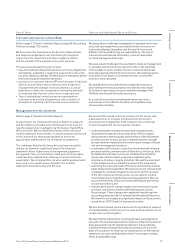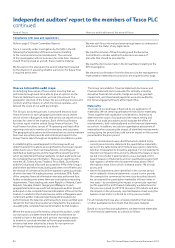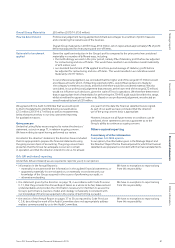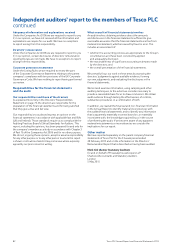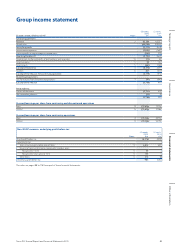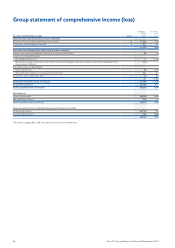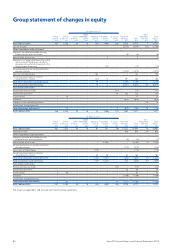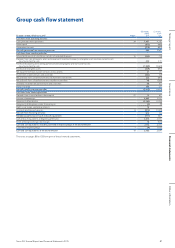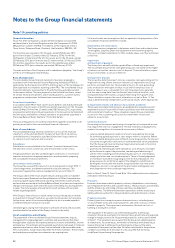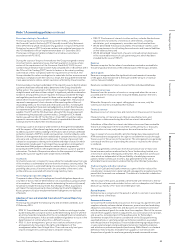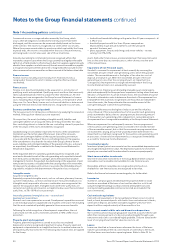Tesco 2015 Annual Report Download - page 82
Download and view the complete annual report
Please find page 82 of the 2015 Tesco annual report below. You can navigate through the pages in the report by either clicking on the pages listed below, or by using the keyword search tool below to find specific information within the annual report.
Area of focus How our audit addressed the area of focus
Compliance with laws and regulations
Refer to page 37 (Audit Committee Report).
Tesco is currently under investigation by the SFO in the UK
following the September 2014 announcement relating
to the commercial income misstatement. The outcome
of this investigation will not be known for some time. However
should fines be levied as a result, these could be material.
We focused on this area given the level of judgement required
by the directors in assessing whether a provision for future fines
is required at this time.
We met with Tesco internal and external legal teams to understand
and discuss the status of any legal claims.
We read the minutes of Board meetings and the Executive
Committee to consider whether the directors are aware of
amounts that should be provided for.
We read the disclosures made in the Annual Report relating to the
SFO investigation.
We obtained confirmation from the directors (via the management
representation letter) that no provisions are required at this stage.
How we tailored the audit scope
In identifying these areas of focus and in ensuring that we
performed enough work to be able to give an opinion on the
financial statements as a whole, we took into account: the
geographic structure of the Group; the accounting processes and
controls; and the industry in which the Group operates, and
tailored the scope of our audit accordingly.
The Group’s accounting process is structured around a local
finance function in each geographical location and a shared
service centre in Bangalore, India that carries out shared services
activities for some of the locations. Each of the local finance
functions report into the central Group finance function. The
local finance functions consist of 19 operating and head office
reporting units and a number of joint ventures and associates.
The geographical locations and the shared service centre maintain
their own accounting records and controls and report to the
Group finance team through an integrated consolidation system.
In establishing the overall approach to the Group audit, we
determined which locations were significant to the Group’s results
either due to size or their risk characteristics. Accordingly we
identified six trading units and the head office reporting unit for
which we determined that we needed to conduct audit work over
the complete financial information. These seven reporting units
were the UK, Turkey, Korea, Thailand, Tesco Bank, Dunnhumby
and the Group head office and accounted for 99% of the Group’s
profit before tax before restructuring and other one-off items and
the reversal of commercial income recognised in previous periods,
of which the main UK trading business contributed 20%. Audits
of the complete financial information were also performed for a
further six trading units where there are local statutory reporting
requirements. These trading units were Republic of Ireland, Czech
Republic, Slovakia, Poland, Hungary and Malaysia. In each
geographical location we used PwC component auditors to audit
and report on the complete financial information of the unit in that
location. In relation to the shared service centre in Bangalore each
component auditor instructed specified audit procedures be
performed over the balances and transactions processed that were
relevant to their reporting location and required for the purposes
of auditing the complete financial information for that location.
Where the work was performed by component auditors, under
our instruction, we determined the level of involvement we
needed to have in the audit work at those reporting locations
to be able to conclude whether sufficient appropriate audit
evidence had been obtained as a basis for our opinion on
the Group financial statements as a whole.
The Group consolidation, financial statement disclosures and
financial statement items accounted for centrally, including
derivative financial instruments, hedge accounting, goodwill
impairment, and share based payments were also audited by
the Group engagement team at the head office.
Materiality
The scope of our audit was influenced by our application of
materiality. We set certain quantitative thresholds for materiality.
These, together with qualitative considerations, helped us to
determine the scope of our audit and the nature, timing and
extent of our audit procedures and to evaluate the effect of
misstatements, both individually and on the financial statements
as a whole. In addition, we used our quantitative assessment of
materiality when assessing the impact of identified misstatements
arising during the period that could have an impact on the current
period and/or the prior period.
• where misstatements were identified which related to the
current period income statement the quantitative materiality
set out in the table below (£50 million) was used to determine
whether misstatements should be adjusted. For misstatements
that did not impact profits and only affected the balance sheet
we did not consider it appropriate to use a standard, profit
based measure of materiality and our quantitative assessment
had regard to whether the misstatement was above 5% of
the balance sheet line to which it related and/or 1% of total
assets; and
• where misstatements were identified in the current period
which related to financial statements issued in prior periods
(for example the commercial income issue described above)
we considered the quantitative materiality of these items in
two ways – by considering the impact on previously reported
profits against the profit based materiality we determined in
the previous period (in 2013/14 this was £150 million) and also
the impact on the previously reported balance sheet using the
balance sheet metrics referred to in the previous bullet.
For all misstatements we also considered whether their nature
or other qualitative factors meant that they were material.
Based on our professional judgement, we determined materiality
for the financial statements as a whole as follows:
80 Tesco PLC Annual Report and Financial Statements 2015
Independent auditors’ report to the members of Tesco PLC
continued











